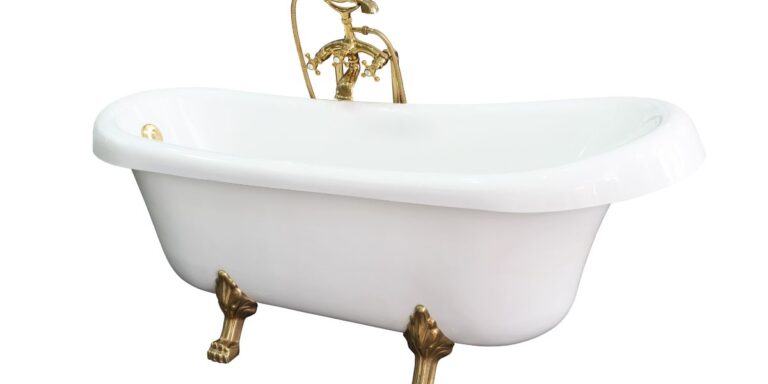Can You Eat An Orange In A Bathtub?
Before we delve into this unconventional question – “Can you eat an orange in a bathtub?“, let’s acknowledge the quirky beauty of it. It symbolizes the harmonious blend of the ordinary and the extraordinary, opening a gateway to a whole new perspective on our everyday lives.
Can You Eat an Orange in a Bathtub?
Yes, it’s entirely possible, and in fact, it’s gaining popularity as a unique way to enjoy a simple pleasure. Consuming an orange in the bathtub combines the relaxation of a bath with the juicy explosion of an orange. It’s not just about the act; it’s about savoring the contrast between the warmth of the bathwater and the chill of the orange, the juxtaposition of relaxation and alertness, an embodiment of Zen living.
Origins of the Trend
This seemingly odd combination first gained traction on social media, where users began posting about their unique bathtub experiences. It’s a practice that appeals to the senses and breaks the monotony of routine.
- Sense of Taste: The intense flavor of the orange is enhanced by the warm bath.
- Sense of Smell: The zesty aroma of the orange fills the air.
- Sense of Touch: The contrast between the cold orange and warm water is tantalizing.
- Sense of Hearing: The sound of the peel tearing away and the juice sizzling adds to the experience.
- Sense of Sight: The vibrant color of the orange in the tranquil bath setting is visually appealing.
Health and Hygiene Aspects
| Pros | Cons |
|---|---|
| It’s a unique way to stay hydrated. | It might make the bathtub sticky if not cleaned properly. |
| The citrusy aroma can be therapeutic. | Citrus juice may irritate sensitive skin. |
| Oranges are packed with Vitamin C. | Slips and falls may occur if the bathtub becomes slippery. |
The Strange Laws About Eating Oranges in the Bathtub
Eating an orange in the bathtub may seem like a harmless and enjoyable activity. The sweet citrus scent mixing with the warm bath water sounds pleasant enough. However, in some places, this simple act could land you in legal hot water. Certain laws and regulations actually prohibit eating oranges, or any other foods, while bathing.
The History Behind These Bizarre Bathtub Laws
So why on earth would eating an orange in the tub be illegal? These strange laws date back to the early 20th century when indoor plumbing first became common in homes. Municipal water systems were just getting established, and there was a major concern about contamination.

At the time, people didn’t have a good understanding of germs and hygiene. It was feared that eating food in the bathtub could allow unseen contaminants to enter the water supply through the drains. Fruits like oranges were especially worrisome because of their acidic juices.
Lawmakers thought oranges may react with soap residue and drain chemicals to form hazardous compounds. There was also a general concern that food particles would clog up the new indoor plumbing systems.
Of course, today we know much more about water treatment and sanitation. Modern drainage and water purification standards make these old contamination worries obsolete. Despite this, the peculiar bathtub food prohibitions remain on the books in some municipalities.
Where Are “Bathtub Orange” Laws Still Active?
The most famous bathtub orange law comes from California. Section 65542 of the California Legal Code states it is illegal to “eat any orange, watermelon, cantaloupe, banana, or other such fruit while in the bathtub.”
This law was passed in 1920 by the California State Legislature. It applied to the entire state. However, enforcement of the law ended up being left to local jurisdictions.
Today, the bathtub fruit law is still technically active in San Francisco and Santa Clara County. However, it is no longer enforced by authorities. Eating an orange in the tub is essentially legal in California, despite the legacy law.
Other U.S. localities with similar bathtub food restrictions include:
- Lexington County, South Carolina – A 1968 statute prohibits eating food in any private bath facilities connected to public water sources.
- Jamestown, Pennsylvania – Code strictly prohibits consuming “any foodstuffs, liquids, or other ingestible matter while in the bathtub.”
- Boston, Massachusetts – An old ordinance bans eating any fruit in the bathtub, with an exception for small quantities of berries.
- Miami, Florida – Though rarely enforced, a law exists against “the enjoyment of citrus fruits while bathing.”
Some hotel or housing codes also contain provisions against eating in the bath as a hygiene measure. But these are more about etiquette than actual laws.
Why Orange Laws Are Not Enforced?
Most modern health experts dismiss the early 20th century concerns about bathtub food safety. Indoor plumbing and sewer systems are now designed to handle typical food waste. The pulp and acids in an orange pose no real hazard.
The Secretary of the California Water Resources Control Board confirmed that the bathtub fruit law has no scientific basis. The state even tried to repeal it in 2002, but the repeal attempt failed over legislative technicalities.
Since the law is outdated and obsolete, district attorneys refuse to prosecute cases over oranges in the tub. Technically illegal but devoid of logic, these laws are simply ignored.
What Are the Risks of Eating Oranges in the Tub?
While fears of drain contamination are exaggerated, some minor risks are associated with eating oranges in the bath.
Slippery Surfaces
Citrus juices dripping on porcelain tub surfaces can make them dangerously slippery. Wet, acidic fruit residues may cause falls and injuries if you attempt to stand or exit the bath.
Staining and Damage
Orange juices contain natural acids and chemicals like limonene. These compounds can actually damage or stain bathtub surfaces with long exposure. Porcelain finishes are vulnerable, as the citric acid eats away at the enamel over time. Re-glossing or refinishing may be required to repair stains.
What Are The Brown Stains On The Bottom Of My Bathtub?
Pest Attraction
Citrus smells and fruit residues in the tub can also attract unwanted pests like flies, ants, and fruit flies. Bugs are drawn to the sweet scent. Rotting orange peels or pulp buildup left over time would certainly invite pest issues.
Plumbing Clogs
Dumping large amounts of orange pulp down the pipes can potentially lead to clogs. The fibrous materials may snag or collect in drain traps. However, a single orange peeled in the tub should not cause plumbing issues.
Risk of Electric Shock
Eating an orange in a bath could create a slight electric shock hazard if your tub has underwater lights or heated surfaces. Any appliance or fixture that contacts water should be protected by a ground fault circuit interrupter. Consult a certified electrician if concerned about shock risk.
Tips for Safely Enjoying Oranges in the Tub
If you want to indulge in a relaxing bathtub experience without legal troubles or safety risks, here are some tips:
- Peel it first – Remove the orange peel before bringing it into the bath to prevent clogging drains with excess fiber.
- Section it – Cut orange segments to prevent big globs of citrus pulp from going down the drain.
- Avoid squirting – Do not deliberately squirt or spray juices around the tub. This can worsen stains and slip hazards.
- Clean up – Quickly wipe up any drips, stains, or stickiness from citrus juices after your bath.
- Exit carefully – Take extra precaution when standing up, as wet tub surfaces will be slippery.
- Dispose of peels – Place leftover peels and pulp in the trash, not down the drain.
- Ventilate bathroom – Turn on exhaust fan and open the window to avoid moisture and pest issues.
- Check equipment – Make sure your tub’s electrical fixtures are up to code to prevent any shock risk.
The Verdict on Bathtub Orange Laws
Nowadays, eating an orange in the bath is generally harmless in most places. Old laws forbidding it are not based on any real health risks. With basic cleaning and safety precautions, you can likely enjoy a tubside snack without issue.
Just exercise care to avoid slips or damage, and dispose of waste properly. Check your local codes to be sure, but orange laws are mostly outdated and unenforced. Bathing should be relaxing, and there’s nothing inherently unsafe about enjoying some vitamin C while you soak!
Frequently Asked Questions
Can you eat in the bath tub?
You can eat in the bath tub, but it’s not recommended since food particles and residue could clog your drain. Additionally, getting water and soap in your food is unappetizing.
Is it good to eat an orange in the shower?
Eating an orange in the shower is not ideal. The juices will get everywhere, making the shower slippery and difficult to clean. It’s better to eat the orange before or after showering.
Why do you have to peel an orange in the shower?
Oranges need to be peeled before eating. The waxy rind is inedible. Peeling an orange in the shower creates a mess as the juices and peels go down the drain. Peel the orange beforehand.
Is it illegal to have a donkey in a bathtub after 7pm in Arizona?
There are no laws in Arizona prohibiting having a donkey in a bathtub after 7pm specifically. However, livestock are not permitted in residential bathrooms in general due to health and sanitation concerns.
Related topics:
- Can You Do Ghusl In A Bathtub?
- Can You Do An Ice Bath In A Bathtub?
- Can You Clean Your Bathtub with Dawn?
- Can I Wear A Tampon In The Bathtub? Bathing Habits and Feminine Care
- Can You Change the Drain on a Bathtub?

William J. Bullock is a licensed plumber with over 15 years of experience installing and repairing bathtubs. He runs his own plumbing company in Greenville and serves residential and commercial clients. William is dedicated to providing honest, transparent advice to help homeowners make informed decisions about their bathroom renovations.
He has established expertise in selecting bathtubs, planning custom installations, diagnosing issues, and completing repairs. William aims to share practical tips and reliable recommendations based on extensive hands-on work. When he isn’t on a job site, William enjoys spending time with his family and volunteering at local community events. He takes pride in delivering quality service and enjoys helping people upgrade their homes.







